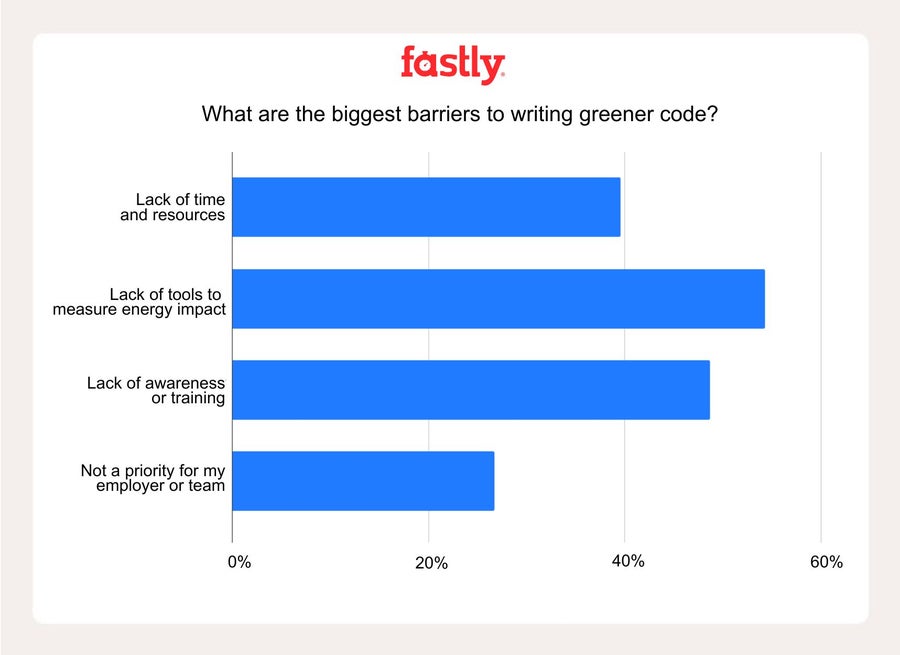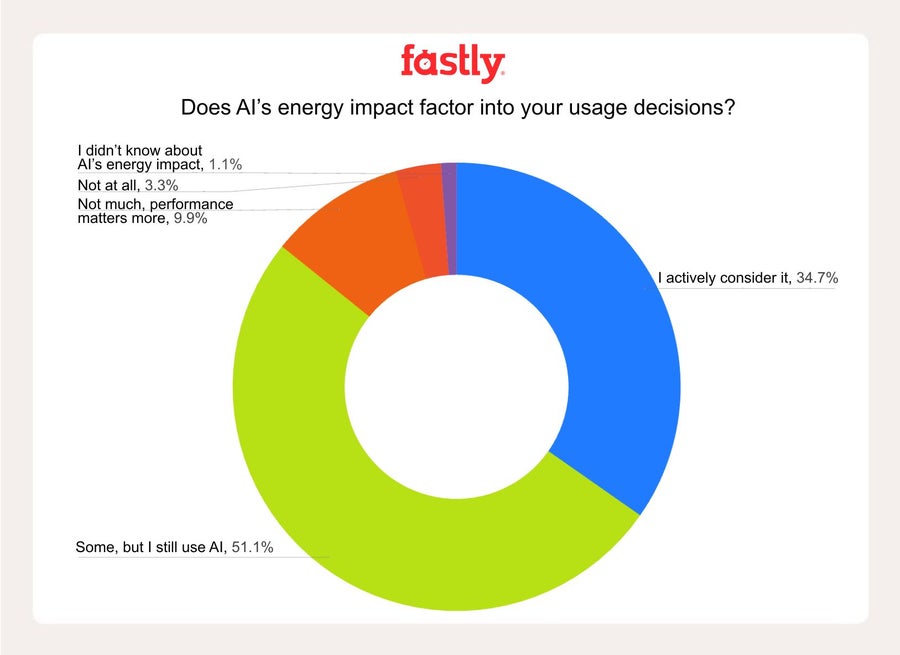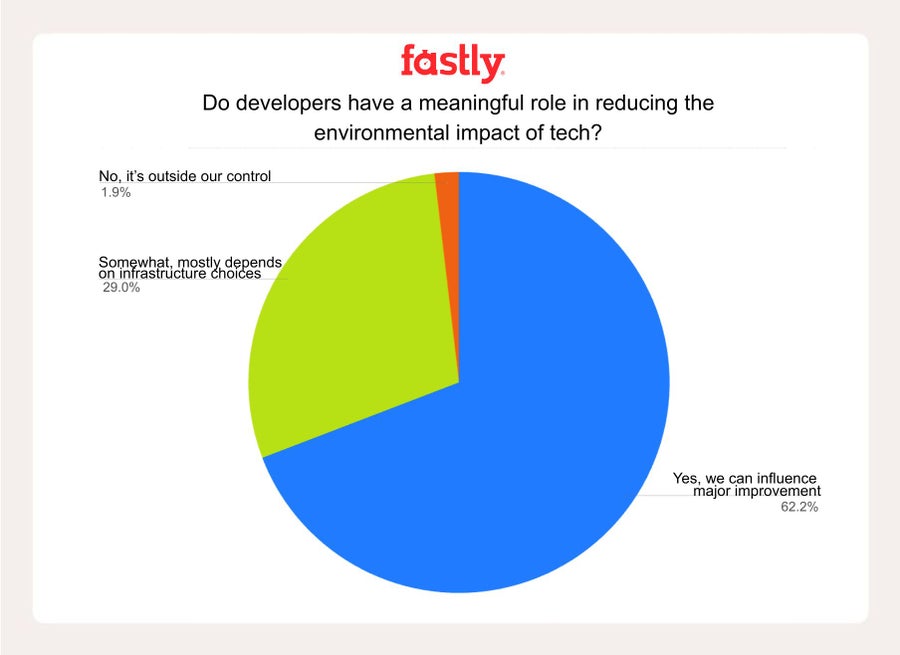The Tools Gap: Why Developers Struggle to Code Green

Content Marketing Manager

Fastly’s latest developer survey shows that 77% of developers actively consider ‘green coding’ in their work — writing software with energy efficiency and sustainability in mind. But one consistent barrier stands in their way: visibility. Developers simply don’t have the tools to measure whether their code is making a difference.
In the July–August 2025 survey of 801 developers, more than half (54%) cited the lack of measurement tools as their top obstacle to green coding. Another 49% said they lacked adequate training or awareness.
That frustration surfaced in the open responses. “Software development will continue to focus on what makes the most money until governing bodies step in and require environmental sustainability be considered,” one developer said.

AI Tools Put Sustainability Back in the Spotlight
The conversation around green coding isn’t just about traditional software. Generative AI tools are a big part of the equation.
Nearly 60% of developers say they already use tools like GitHub Copilot or Google Gemini in production code. And 67% are aware those tools come with a significant energy footprint.

That awareness shapes behaviour in different ways:
35% say they actively limit AI use because of sustainability concerns
51% acknowledge the footprint but still use AI regularly
As one developer put it: “AI speeds me up, but I know it’s not energy-free. It’s worth it when it’s worth it.” Others were more blunt: “AI and supercomputers use a lot of energy, and sometimes it can have an effect on the area this computer is placed in.”
They’re not wrong. According to Mosharaf Chowdhury, Associate Professor of CSE at the University of Michigan, training the GPT-3 model once can consume in extreme scales consume as much as 1,287 MWh — equivalent to powering a U.S. household for 120 years. And the cost doesn’t stop with training: inference, the day-to-day running of AI assistants like Copilot, requires continuous GPU power that scales quickly.
For developers weighing productivity gains against energy costs, that trade-off is becoming harder to ignore.
Developers Believe They Can Make an Impact
Despite the obstacles, most developers don’t see themselves as powerless. 69% of respondents believe they can meaningfully reduce the industry’s carbon footprint, and more than 80% say they always or often consider sustainability when designing systems.
That conviction shows up in daily work:
47% say they think about sustainability in their role regularly
44% say it crosses their mind, even if it doesn’t always guide their work
1 in 5 would feel frustrated if their team ignored achievable sustainability in coding choices

Open responses point to where developers see the biggest opportunities: “optimizing energy efficiency in data centers and cloud computing to reduce carbon emissions” and “writing better code and stopping wasted bandwidth on ads.”
And when developers have the right tools, their work can translate directly into lower energy use. Case in point: in collaboration with the University of Waterloo, a Fastly engineer reorganized just a few lines of Linux kernel code related to network interrupts. The tweak cut power consumption by up to 30% for certain data-center workloads.
Closing the Visibility Gap
The bottom line from Fastly’s survey: developers want to write sustainable software, and they believe they can have a real impact. However, without visibility into the actual energy effects of their work, their efforts remain guesswork.
That’s the gap Fastly is aiming to close with its new Sustainability dashboard, which gives developers real-time visibility into the energy impact of their code running on Fastly’s edge network.
Try our Sustainability Dashboard to see the impact of using the Fastly platform.
Methodology
Fastly surveyed 801 professional developers between July 10 and August 18, 2025. Respondents were required to regularly write or review code as part of their role. The survey was conducted online, with screening and quality checks to reduce false or low-quality responses. Percentages are rounded. As with all self-reported surveys, results may reflect some bias in how respondents perceive or describe their behaviour.